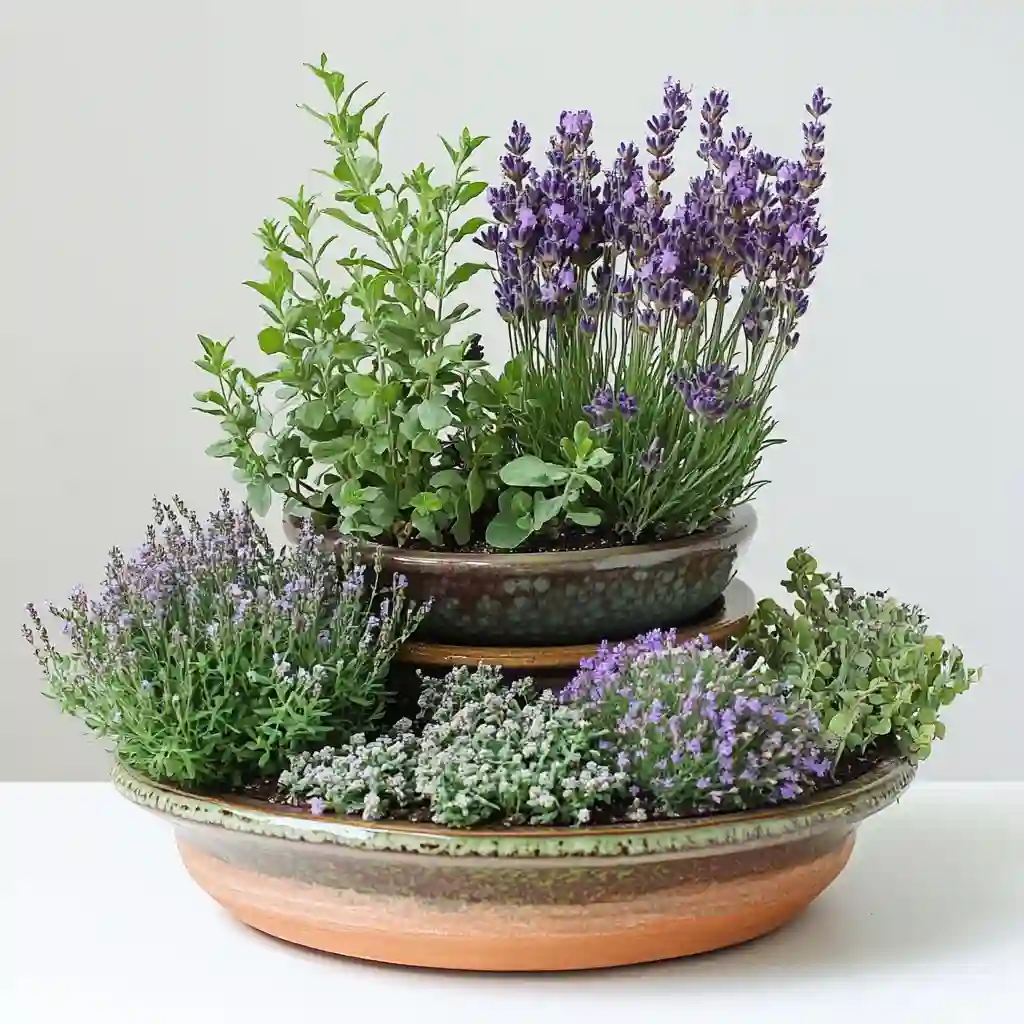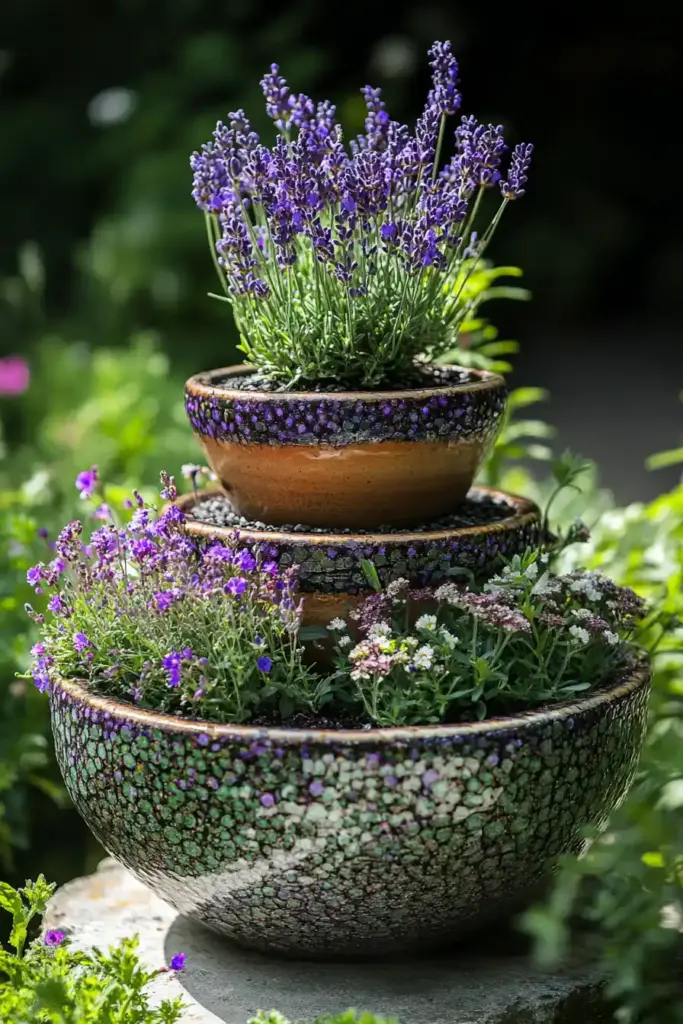Lavender is more than just a beautiful plant—it’s a fragrant, low-maintenance, pollinator-friendly herb that brings both charm and purpose to any garden. If you’re looking to add color, attract bees, repel pests, or simply enjoy the calming scent of its blooms, learning how to grow lavender can be a deeply rewarding endeavor.
With the right variety and growing conditions, lavender thrives in various climates and can be used in everything from landscaping to culinary creations and DIY crafts. Whether you garden in containers, raised beds, or directly in the ground, this hardy perennial is a stunning and practical addition.
Quick Facts & Botanical Insights
Before you dig in—literally—here are some essential facts about lavender to help you understand the plant’s background and make informed choices for your garden:
🌿 Botanical Profile
- Common Name: Lavender
- Botanical Name: Lavandula spp.
- Plant Type: Woody perennial herb (can behave as an annual in colder regions)
- Plant Family: Lamiaceae (mint family)
- Native Range: Mediterranean region
🌼 Popular Varieties for Gardeners
- English Lavender (Lavandula angustifolia): Best for cold climates; compact and fragrant. Cultivars like ‘Munstead’ and ‘Hidcote’ are great for Zones 5–8.
- French Lavender (Lavandula dentata): Showy, serrated leaves with strong fragrance; ideal in Zones 8–11.
- Lavandin (Lavandula x intermedia): A hybrid between English and Portuguese lavender; larger and more robust, often used for essential oil production. ‘Phenomenal’ is a top choice for hardiness and performance.
- Spanish Lavender (Lavandula stoechas): Distinctive “rabbit ear” blooms; heat-tolerant but not cold-hardy.
🌎 Hardiness Zones
- Most English and hybrid lavenders are hardy in USDA Zones 5a–9, with proper winter protection.
- French and Spanish varieties are best treated as annuals in Zone 5 or overwintered indoors.
🐝 Pollinator Magnet
Lavender flowers are rich in nectar, making them a top choice for attracting bees, butterflies, and other beneficial insects.
Understanding these basic traits will help you choose the right lavender for your region and needs.
Ideal Growing Conditions
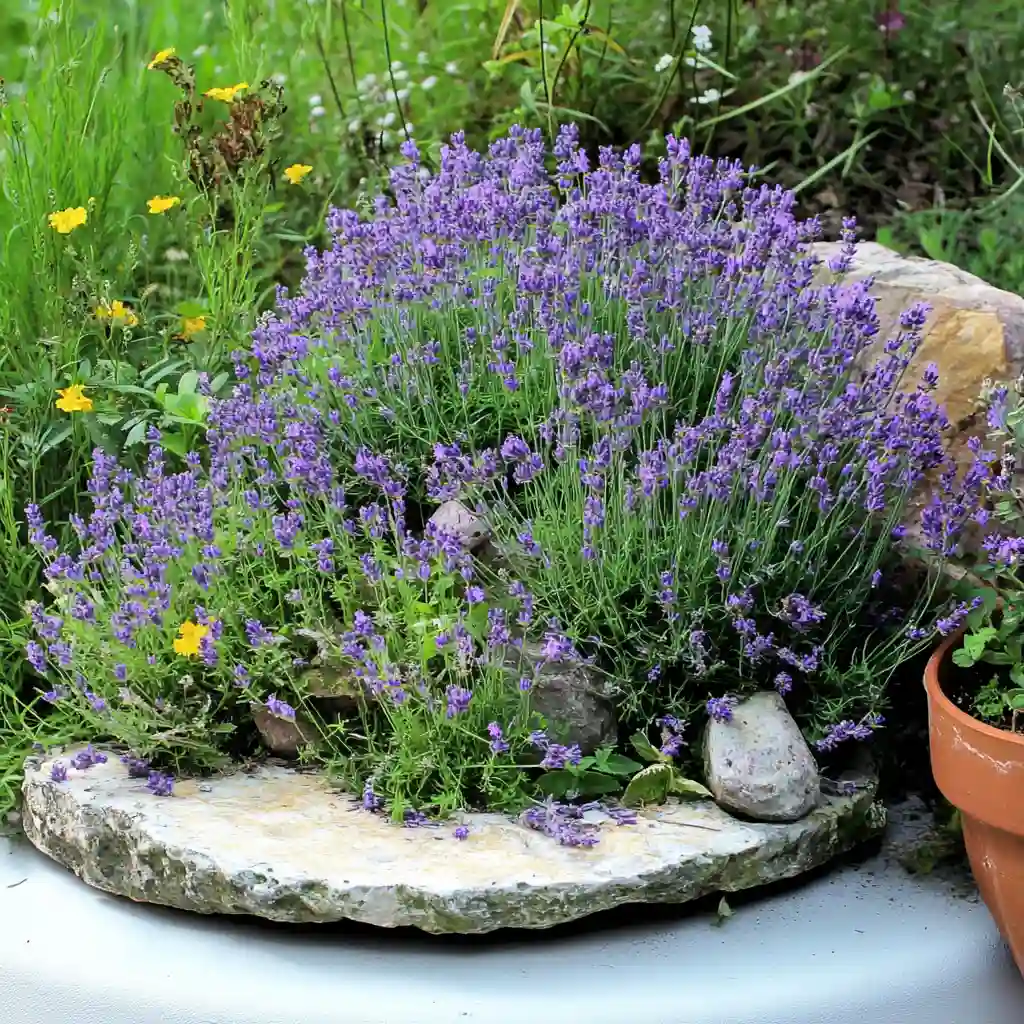
Lavender may be hardy and drought-tolerant, but it thrives best when its native Mediterranean habitat is mimicked. Providing the right environment from the start ensures healthy plants with maximum fragrance and bloom.
☀️ Light Requirements
- Full sun is essential. Lavender needs at least 6 to 8 hours of direct sunlight per day to produce the oils responsible for its iconic fragrance and to encourage blooming.
- In shadier spots, plants may become leggy, less aromatic, and more prone to disease.
🌱 Soil Preferences
- Well-drained soil is non-negotiable. Lavender dislikes “wet feet” and is prone to root rot in soggy conditions.
- Ideal soil pH is slightly alkaline (pH 6.5–7.5). You can add a small amount of lime to adjust soil pH if needed.
- For heavy clay soils (common in areas like northern Illinois), amend with a coarse compost mix (like TGP Garden Compost Mix) and gritty materials like sand or crushed granite to improve drainage.
- Plant lavender on mounds, raised beds, or the crest of a slope to enhance runoff and airflow around the roots.
💧 Watering Needs
- Low water requirements once established.
- Water new transplants regularly during the first growing season to help them root.
- After year one, only water during prolonged droughts—lavender prefers dry spells over dampness.
🌬️ Air Circulation & Placement
- Choose open, breezy spots to prevent mildew and fungus, especially in humid climates.
- Avoid placing lavender too close to other moisture-loving plants; it pairs best with other drought-tolerant, sun-loving species like sedum, yarrow, and ornamental grasses.
By meeting these basic environmental needs, you’ll set the stage for a lush, aromatic, and low-maintenance lavender patch that performs beautifully year after year.
Step-by-Step Planting Guide
Now that you understand the ideal conditions, it’s time to get your hands in the soil! Here’s a detailed guide to planting lavender, whether you’re starting with nursery transplants or sowing seeds.
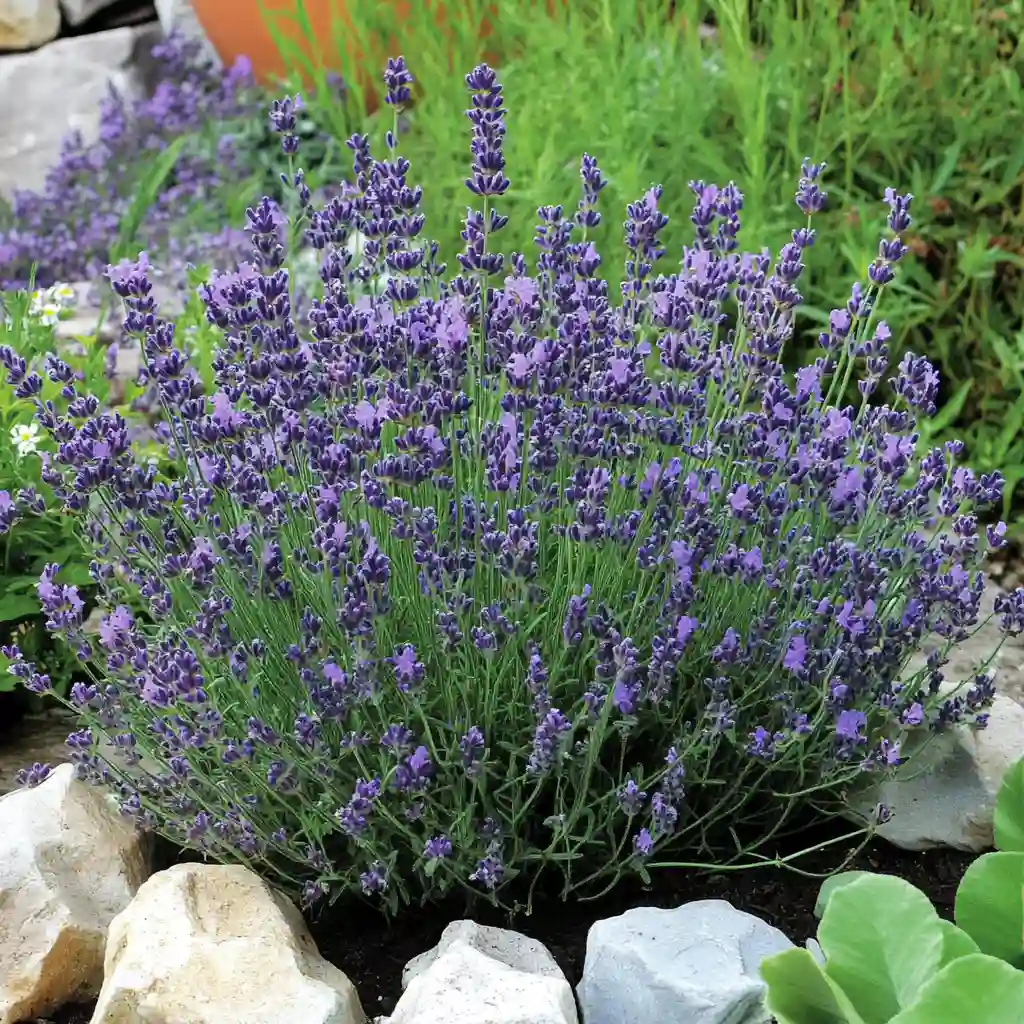
🌱 Starting with Transplants (Recommended for Beginners)
- Choose the Right Spot: Select a location with full sun and excellent drainage.
- Prep the Soil:
- Amend clay-heavy or compacted soil with coarse sand, gravel, or compost.
- Mix in a small amount of lime if your soil is too acidic.
- Spacing:
- Space plants 18–24 inches apart depending on the variety.
- This allows air circulation and gives them room to form their natural mounded shape.
- Planting Depth:
- Dig a hole just deep enough so the crown of the plant is level with the soil surface.
- Backfill with your amended soil and press gently but firmly to eliminate air pockets.
- Watering:
- Water thoroughly at planting.
- Continue to water every few days until the plant is established (typically 2–4 weeks).
🌿 Planting from Seed (More Challenging)
- Start Indoors:
- Begin seeds 8–12 weeks before the last frost.
- Sow on top of seed-starting mix and lightly cover.
- Keep moist and warm (70°F+).
- Germination Time:
- Be patient—lavender seeds can take 2–4 weeks to sprout.
- Transplant Carefully:
- Once seedlings have developed 2–3 sets of true leaves, harden them off before transplanting outside.
🌸 Container Planting
- Use terra cotta pots or containers with drainage holes.
- Fill with a gritty mix (50% potting soil, 25% sand, 25% perlite or crushed gravel).
- Container-grown lavender needs more frequent watering—but always let the soil dry between waterings.
Planting correctly ensures a strong start, giving your lavender the foundation it needs for years of vibrant growth and bloom.
Maintenance & Ongoing Care

Lavender is famously low-maintenance once it’s settled into your garden. However, a few simple seasonal practices can keep your plants healthy, compact, and blooming to their full potential year after year.
💧 Watering Routine
- First Year: Water deeply but infrequently—about once or twice per week depending on rainfall. Allow the soil to dry out between waterings.
- After Establishment: Cut back to occasional deep watering during drought. Overwatering is one of the most common ways to kill lavender.
✂️ Pruning Tips
- Timing: Prune in late spring, after new growth emerges. Avoid fall pruning, which can leave the plant vulnerable to winter damage.
- How to Prune:
- Remove any dead or woody stems.
- Cut back about one-third of the plant, shaping it into a neat mound.
- Avoid cutting into old wood that has no leaves, as it may not regrow.
- Regular pruning encourages dense growth and more prolific flowering.
🍂 Winter Protection (For Zones 5–6)
- Apply a loose mulch of dry leaves or pine needles around the base of the plant after the first frost to insulate the roots.
- In exposed or windy areas, cover with evergreen boughs or use a breathable garden fabric dome.
- Avoid heavy, moisture-retentive mulches like straw or bark, which can lead to rot.
🌿 Fertilizing Lavender
- Minimal feeding is best. In rich soil, lavender becomes leggy and produces fewer flowers.
- Apply a thin layer of compost in spring as a gentle nutrient boost.
- Avoid high-nitrogen fertilizers—they encourage foliage growth at the expense of flowers.
By following these care practices, your lavender will remain healthy, shapely, and richly aromatic through the seasons.
Common Pests & Diseases (and Eco-Friendly Solutions)
Lavender is naturally resistant to many pests and diseases thanks to its aromatic oils, but no plant is completely immune. Here’s how to recognize and manage the most common issues—organically and effectively.

🐛 Common Pests
1. Aphids
- Symptoms: Clusters of small green or black insects on new growth, sticky residue (honeydew), curling leaves.
- Solution: Spray affected areas with a strong jet of water, or apply insecticidal soap or neem oil. Encourage natural predators like ladybugs.
2. Spittlebugs
- Symptoms: Foamy white blobs on stems.
- Solution: These are mostly harmless. Simply wash off with water or remove by hand.
3. Whiteflies
- Symptoms: Tiny white flying insects, yellowing leaves.
- Solution: Use yellow sticky traps or spray with diluted neem oil.
🦠 Fungal Diseases
1. Root Rot
- Cause: Poor drainage or overwatering.
- Prevention: Plant in well-drained soil and avoid watering too frequently.
- Solution: Remove and discard severely affected plants. Improve soil drainage or consider raised beds.
2. Leaf Spot or Gray Mold (Botrytis)
- Symptoms: Brown spots on leaves or fuzzy gray mold, especially in humid or wet conditions.
- Solution: Prune out infected parts and improve air circulation by spacing plants properly. Avoid overhead watering.
🐌 Animal Troubles
- Deer and Rabbits: Rarely an issue—lavender’s strong scent tends to repel them.
- Voles and Moles: If tunneling occurs, consider planting in containers or adding grit around the root zone.
🌿 Natural Prevention Tips
- Rotate lavender with other sun-loving herbs like thyme or rosemary to discourage pests.
- Avoid high humidity by keeping plants spaced and pruning regularly.
- Companion planting with lavender can also protect other vulnerable plants nearby due to its natural repellency.
Staying proactive with drainage, spacing, and gentle organic treatments will keep your lavender happy and mostly pest-free.
Additional Expert Tips & FAQs
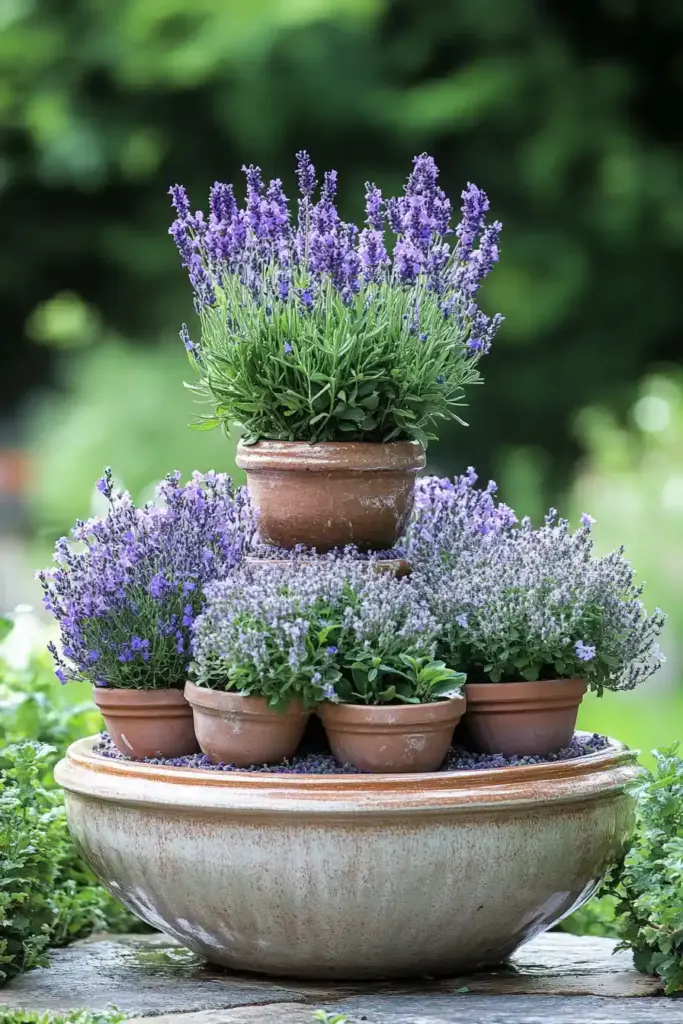
Want to take your lavender-growing skills to the next level? These expert tips and frequently asked questions will help you avoid common mistakes and maximize your harvest—whether you’re growing for beauty, fragrance, or utility.
🌟 Expert Tips for Thriving Lavender
- Tip #1: Skip the Mulch (Most of the Time)
While mulching is common in garden beds, lavender prefers “bare feet.” Mulch retains too much moisture. Instead, use gravel or crushed stone around the base to keep roots dry and warm. - Tip #2: Deadhead for a Second Bloom
After the first flush of flowers fades in midsummer, cut off spent blooms to encourage a second, lighter bloom in late summer or early fall. - Tip #3: Grow in Clumps for Impact
Group 3 or more plants together for visual appeal and to create fragrant focal points in your garden. - Tip #4: Don’t Baby It Too Much
Lavender thrives on benign neglect. Overwatering, overfeeding, or constantly fussing over it tends to do more harm than good. - Tip #5: Harvest in the Morning
For the best fragrance and oil content, harvest lavender in the early morning, just after dew has evaporated but before the heat of the day sets in.
❓Frequently Asked Questions
Q: Can I grow lavender indoors?
A: Yes, but it’s tricky. You’ll need a south-facing window or a grow light for 6–8 hours of daily light. Ensure good airflow and avoid humid spaces like kitchens or bathrooms.
Q: When should I plant lavender in Zone 5?
A: Late spring, after the danger of frost has passed. This gives plants a full growing season to establish before winter.
Q: How long does lavender live?
A: With proper care and good drainage, English lavender can live 10–15 years. Regular pruning helps extend its lifespan.
Q: Can I eat lavender?
A: Absolutely! Just make sure you’re using culinary lavender (like Lavandula angustifolia). Use it sparingly in baked goods, teas, lemonades, or even savory dishes like roasted lamb.
Q: Why isn’t my lavender blooming?
A: Possible causes include too much nitrogen, not enough sun, improper pruning, or poor drainage. Adjust these factors, and blooms should improve.
By combining these practical tips with the guidance from earlier sections, you’ll be well on your way to growing lush, fragrant lavender that’s as productive as it is pretty.
Conclusion
Growing lavender is one of the most rewarding gardening experiences—both for its effortless beauty and wide range of benefits. With its silvery foliage, vivid blooms, and calming aroma, lavender fits perfectly in everything from rock gardens to raised beds, borders, and containers.
By selecting the right variety, giving it plenty of sun, and avoiding overwatering, you’ll enjoy a long-lasting, resilient plant that not only beautifies your space but also attracts pollinators, deters pests, and offers fragrant harvests for culinary and craft use.
Whether you’re in a cool northern zone or a warm, dry region, lavender can be a standout in your landscape with just a bit of planning and care.

